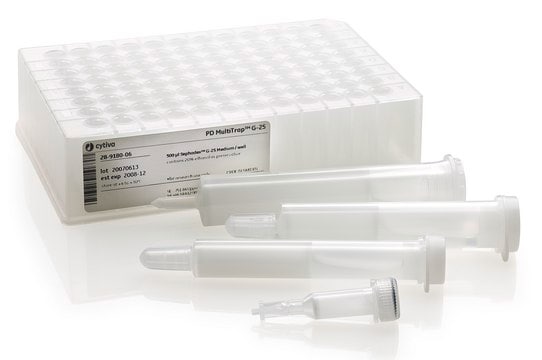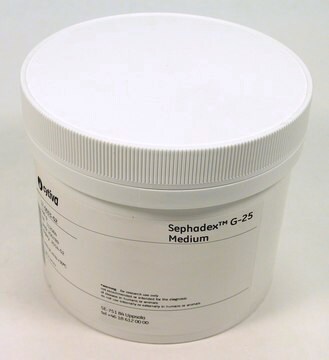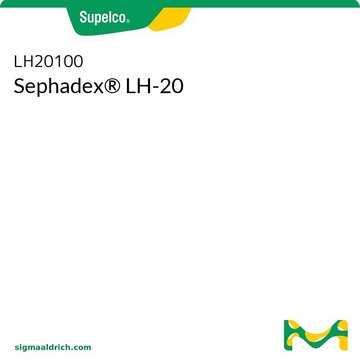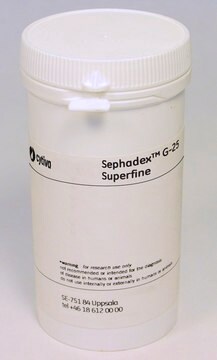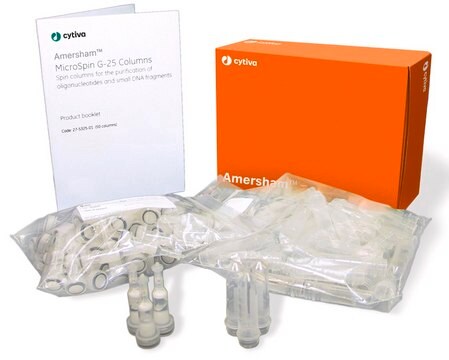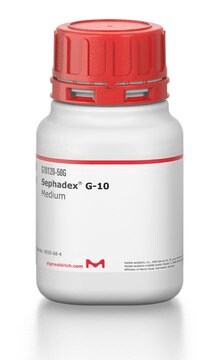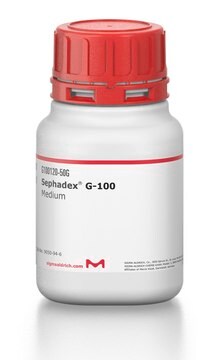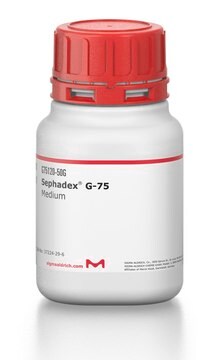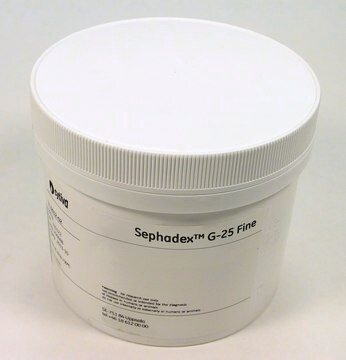G25150
Sephadex® G-25
Medium
Synonym(s):
Sephadex G-25 Medium, Sephadex® G-25 resins, Size exclusion resins
About This Item
Recommended Products
Quality Level
technique(s)
buffer exchange: suitable
matrix active group
phase
swelling
1 g swells to 4-6 mL
bead size
50-150 μm
application(s)
life science and biopharma
compatibility
Cytiva
InChI
1S/C6H12O6.C3H8O3/c7-1-2-3(8)4(9)5(10)6(11)12-2;4-1-3(6)2-5/h2-11H,1H2;3-6H,1-2H2/t2-,3-,4-,5-,6-;/m1./s1
InChI key
BCPVZFFJGCURNR-OCOFDJSDSA-N
Looking for similar products? Visit Product Comparison Guide
General description
Application
Dextrans: 100 - 5,000
Globular Proteins 1,000 - 5,000
Sephadex® G-25 has been used:
- in the desalting of protease
- in the column for the separation of radioiodinated oTP-1 from free iodine during the characterization of radioiodinated oTP-1 and receptor assay validation
Biochem/physiol Actions
Features and Benefits
- Rapid desalting, contaminant removal, and transfer to a new buffer in a single step.
- High recovery rate with minimal sample dilution.
- Offered in prepacked HiPrep Desalting and HiTrap desalting columns for convenient and fast desalting.
- Specifically designed as a BioProcess resin for industrial applications.
Legal Information
replaced by
Storage Class Code
11 - Combustible Solids
WGK
WGK 3
Flash Point(F)
Not applicable
Flash Point(C)
Not applicable
Personal Protective Equipment
Certificates of Analysis (COA)
Search for Certificates of Analysis (COA) by entering the products Lot/Batch Number. Lot and Batch Numbers can be found on a product’s label following the words ‘Lot’ or ‘Batch’.
Already Own This Product?
Find documentation for the products that you have recently purchased in the Document Library.
Customers Also Viewed
Our team of scientists has experience in all areas of research including Life Science, Material Science, Chemical Synthesis, Chromatography, Analytical and many others.
Contact Technical Service